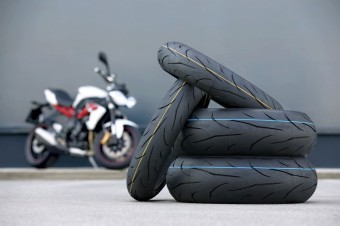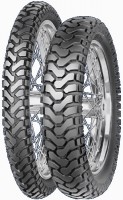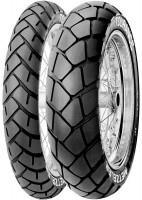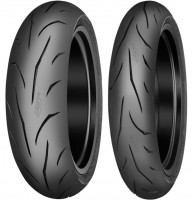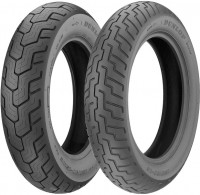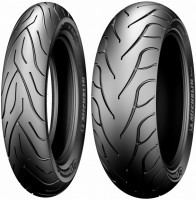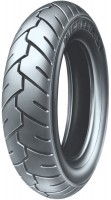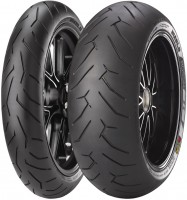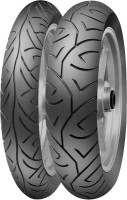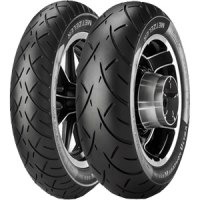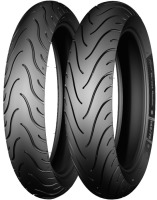Everything a beginner biker needs to know about motorcycle tyres
We independently verify the products and technologies we recommend.
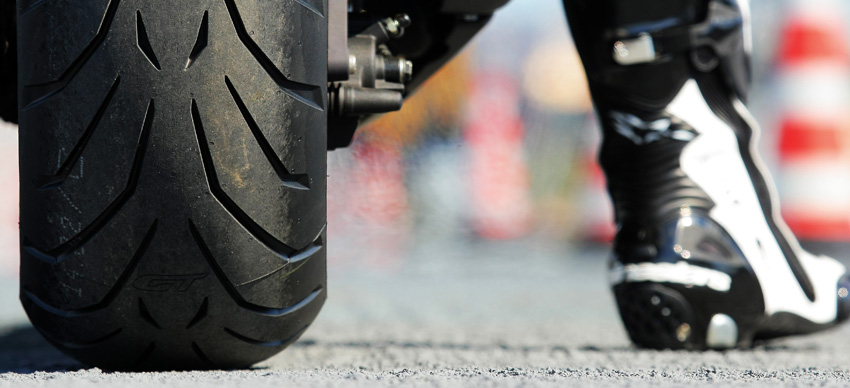
Tyres must provide reliable traction, depending on what kind of surface the bike is used on, stable straight-line movement (acceleration, movement and deceleration), stable movement in corners, as well as driving comfort (damping vibrations, not being “noisy”, etc.). .). In addition, it is desirable that the tyres are durable and wear resistant.
Why is it necessary to check the condition and pressure of tyres before driving?
Many manufacturers in the manuals for their motorcycles, in part regulating its maintenance, recommend checking the pressure and condition of the tyres before each ride. Perhaps, to a novice rider, this procedure will seem unnecessary or not important. But, believe me, this is just as important and necessary as when leaving, wearing a helmet and protective equipment.
 |
| Tyres should be checked before every ride. |
During operation, motorcycle tyres are exposed to multiple loads, sometimes much greater than those that affect car tyres. These are the forces of friction, rolling resistance, inertia forces. Add to this the national features of the road surface (pits, stones, sharp corners on bridge floors) and the presence of "road debris" (glass and other objects on the roadway). Sometimes, a quiet evening ride around the city can make a tyre unusable.
Under- or over-inflation of tyres impairs handling, accelerates tyre wear and reduces the comfort of the bike. Check pressure in cold tyres, not earlier than three hours after operation. The recommended pressure values are indicated in the manual, and can also be duplicated on the chain guard, frame, pendulum. Usually, the recommendations contain two values — for solo riding and riding with a passenger, and for enduro class motorcycles — also values for driving on asphalt roads and off-road. Do not exceed the maximum allowable pressure and load on the tyre indicated on the side of the tyre or in the vehicle manual.
How can you tell if tyres are worn out?
 |
| Observing the condition of the tyre will determine the degree of wear |
Most well-known brands of tyres have wear indicators that can be used to easily determine the degree of tyre wear — these are such protrusions at the bottom of the tread grooves. When the tread wears out and at least one indicator mark approaches the running surface of the tyre, be ready to replace it. It is better to replace without waiting until the indicator is level with the working surface of the tyre.
In addition, you should remember about the legally established tolerances for the residual tread depth. The most common standard for motorcycles is 0.8 mm (or 1/32 inch where the western system of measures and weights is used). And here the point is not only in compliance with the letter of the law, but in the fact that a tyre with a worn tread significantly loses its ability to drain water from the contact patch.
And if it may seem to the rider that the grip of a “bald” tyre in dry weather is even better, then in the rain riding on such a tyre is extremely dangerous and therefore undesirable. In addition to the tread depth, it is worth paying attention to the condition of the tyre as a whole — the uniformity of wear, the absence of cuts and foreign bodies in the tyre, the absence of blisters and ruptures on the side parts, the shoulder of the tyre.
Selection of new tyres
When buying tyres, it is first of all important to remember the rule — choose only new ones! Buying a used tyre is a big risk. No one knows how many heat cycles a used tyre has gone through. The tyre is a complex and technologically advanced product. The composition of the tyre is not homogeneous and the lower layers can wear out faster.
The motorcycle tyre market offers many brands and models. When choosing tyres, proceed from the recommendation of the bike manufacturer, your driving style and the purpose of the motorcycle and tyres — touring, sports, off-road tyres, etc. Tyres are structurally different for the front and rear axles, based on the different tasks and functions of the front and rear wheels. It is recommended to install tyres of the same brand and model on both axles.
By design, tyres are, by analogy with automobile tyres, radial and diagonal. The difference lies in the location of the cords in the structure of the tyre. In a radial tyre, the threads without overlapping layers pass from one bead to another (marked with the letter R — Radial). In the diagonal threads of different layers intersect (marked with the letter B-Bias).
 |
| Comparison of Bias and Radial Tyre Design |
Due to the design features, the shoulder area of radial tyres is inferior in strength to diagonal counterparts. Radial tyres have a low profile and wide tread, the tyres are able to withstand high speeds, but less mass loads on the wheel. Such tyres are mainly used on sports (road-ring), sports-tourist and city motorcycles. Bias tyres have a more rounded shape. They have stronger (and taller) sidewalls and are used on heavy road bikes, cruisers, motocross and enduro.
It is also worth paying attention to the presence or absence of a camera in the wheel device. Alloy rims on most modern bikes come with a tubeless tyre (such a tyre would be labeled TL (tubeless)). On spoked disks — chambered (TT marking (tube type)). The difference between them is fundamental, so do not try to strengthen the "tubeless" camera and vice versa.
Depending on the purpose of the tyre, in addition to the internal structure, its tread pattern is also different. Road and touring tyres will have grooves to drain water. Tyres for road racing for dry surfaces do not have a tread pattern at all, the so-called slicks (eng. Slick — smooth).
 |
| Road tyres with grooves for water drainage |
And the tread of the same sports, but rain tyres, on the contrary, will be dotted with drainage grooves. Cross -country and enduro tyres will have larger or smaller studs, symmetrical or asymmetrical studs.
 |
| "Off-road" tyres for enduro motorcycles |
Your motorcycle is designed to ride on a specific range of tyres. The manual will tell you the right size, often the specific manufacturer and model of the tyre installed in the original configuration. Consider the marking of the rear tyre on the example of a Yamaha FZ6 motorcycle.
The marking will be as follows — size 180/55 ZR17 M / C 73W, manufacturer Bridgestone / BT021R BB, where:
180 — tyre profile width, mm;
55 — height of the side part (shoulder) of the tyre,% of the width;
ZR — high speed radial tyre; 17 — rim diameter of the disc 17";
M/C — motorcycle tyre;
73 — load index, less than 365 kg per wheel;
W — permissible speed up to 270 km/h.
There is also an additional marking:
Rear wheel — installation on the rear wheel (for the front it will be front wheel);
Rotation(next to the arrow) — indicates the direction of rotation of the wheel, for proper installation;
TL (tubeless) — tubeless tyre(for most modern sports and road motorcycles), a tube tyre will be designated TT (tube type) — more often used for enduro and motocross motorcycles;
DOT(department of transportation US) — a code assigned to a specific tyre manufacturer by the US Department of Transportation;
E (with a number in a circle) — UN rules, regulations, according to the official approval of tyres. In this case, the number in the circle is the code of the country that issued the approval, and the numbers outside the circle are the approval number.
The four digits in the oval are the production date, where the first two digits are the week number of the year, and the last two are the production year.
Also, the country of manufacture and other auxiliary markings are indicated on the tyre (this may be the code of the composition (compound) of the tyre, the abbreviation of the name of the technology used in production, etc.).
Summary
Get the right tyres, get them fitted by a professional, keep your pressure under control and inspect regularly, avoid running into sharp objects and avoid slippery surfaces. When mounting, it is important to observe the direction of the tread pattern (indicated by an arrow on the side of the tyre). After installing a new tyre, drive it gently for the first 100-200 km, avoiding sudden accelerations, braking and sharp cornering angles. During this time, the tyre will firmly sit on the disc, acquire the roughness of the working surface necessary for better grip. Take care of your tyres and they will give you many miles of safe and comfortable driving.
All-season tyres sometimes seem to many drivers to be an excellent solution that allows.
The choice of summer tyres should be approached no less carefully than winter tyres.
Electric cars are trending! And not only adults, but also children.
An overview of five excellent navigators for motorists, athletes or tourists.
We choose the most optimal frame, wheels and brakes for the most comfortable riding.
Was this article useful? Yes0 No0 |
Articles, reviews, useful tips
All materials